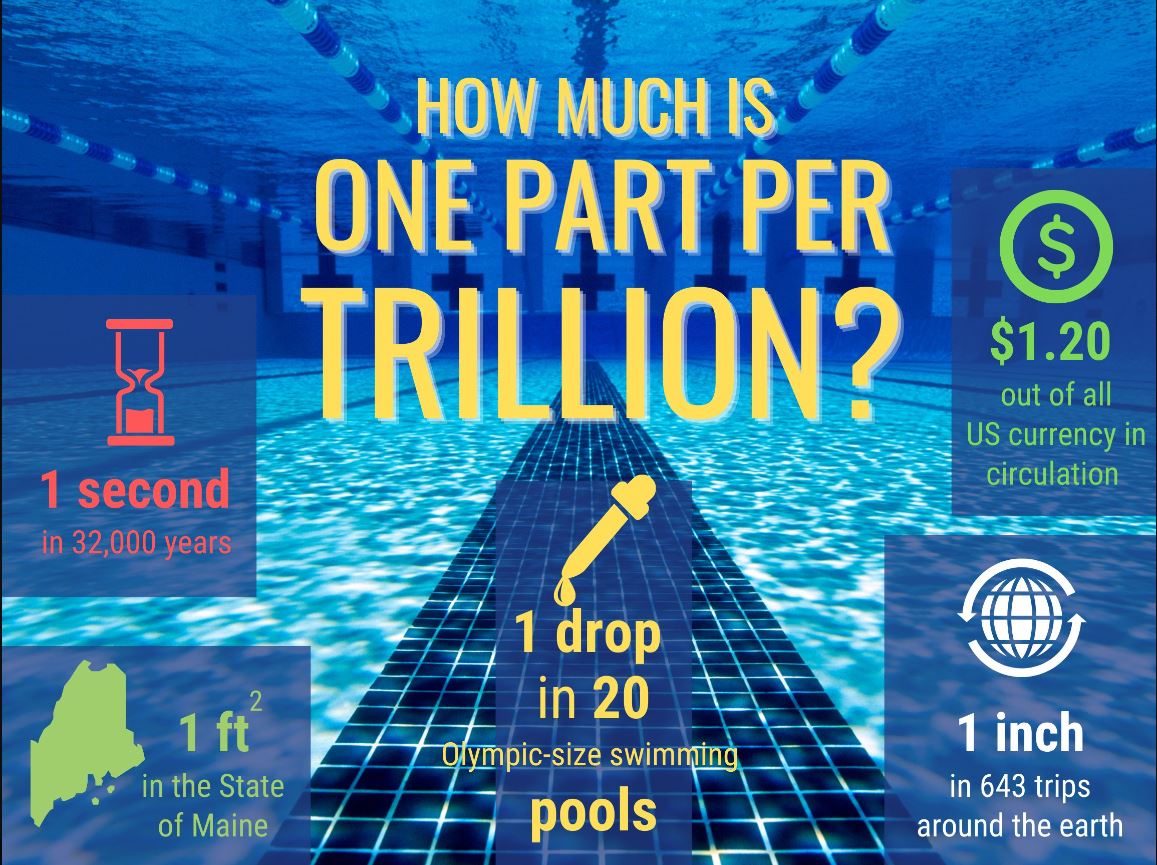Brewer Water PFAS overview
Per- and polyfluoroalkyl substances (PFAS)- are man-made chemicals used since the 1940s in consumer products and industrial applications. Due to their widespread use and persistence in the environment, most people in the United States have been exposed to some level of PFAS. There is evidence to suggest that continued exposure above specific levels to certain PFAS may lead to adverse health effects.
_____________________________________________________________________
Maine– LD 129 became law on June 21, 2021, all community public water systems were required to sample finished water for PFAS before December 31, 2022. An interim standard of 20 ppt for six PFAS chemicals (alone or in combination) is in effect.
The six regulated PFAS contaminants are: (PFOA), (PFOS), (PFHxS), (PFNA), (PFHpA) and (PFDA).
An interim standard of 20 parts-per-trillion (PPT) for the six PFAS (alone or in combination) is immediately in effect.
_____________________________________________________________________
EPA (United States Environmental Protection Agency)-On April 10, 2024, EPA announced and established nationwide, drinking water standards.
EPA finalized a National Primary Drinking Water Regulation (NPDWR) establishing Maximum Contaminant Levels (MCLs), for six PFAS in drinking water. PFOA, PFOS, PFHxS, PFNA, and HFPO-DA as contaminants with individual MCLs, and PFAS mixtures containing at least two or more of PFHxS, PFNA, HFPO-DA, and PFBS using a Hazard Index MCL to account for the combined and co-occurring levels of these PFAS in drinking water. The final rule requires:
- Public water systems must monitor for these PFAS and have three years to complete initial monitoring (by 2027), followed by ongoing compliance monitoring. Water systems must also provide the public with information on the levels of these PFAS in their drinking water beginning in 2027.
- Public water systems have five years (by 2029) to implement solutions that reduce these PFAS if monitoring shows that drinking water levels exceed these MCLs.
- (2029), public water systems that have PFAS in drinking water which violates one or more of these MCLs must take action to reduce levels of these PFAS in their drinking water and must provide notification to the public of the violation.
*From the MDWP Maine Drinking Water Program-The National Primary Drinking Water Regulation (NPDWR) for six PFAS compound’s- was announced by the EPA on April 10, 2024.
Maine is currently reviewing this regulation and will be adopting rules at least as stringent. The interim Maine standard of 20 ppt for six PFAS compounds (alone or in combination) is still in effect until further notice
| Chemical | Federal– Maximum Contaminant Level Goal (MCLG) | Federal– Maximum Contaminant Level (MCL) | Maine– Maximum Contaminant Level (MCL) | April-22 Results |
| PFDA | 20.0 ppt | <2.0 ppt | ||
| PFHpA | 20.0 ppt | <2.0 ppt | ||
| PFOA | Zero | 4.0 ppt | 20.0 ppt | <2.0 ppt |
| PFOS | Zero | 4.0 ppt | 20.0 ppt | <2.0 ppt |
| PFHxS | 10 ppt | 10 ppt | 20.0 ppt | <2.0 ppt |
| PFNA | 10 ppt | 10 ppt | 20.0 ppt | <2.0 ppt |
| HFPO-DA ( GenX Chemicals) | 10 ppt | 10 ppt | <2.0 ppt | |
| Mixtures of two or more: PFHxS, PFNA, HFPO-DA, and PFBS | Hazard Index 1 | Hazard Index 1 | <2.0 ppt | |
| PFAS, Total Maine (6)-alone or in combination may not exceed 20.0 ppt | 20.0 ppt | <2.0 ppt | ||
| Maximum Contaminant Level Goal (MCLG): The level of a contaminant in drinking water below which there is no known or expected risk to health. MCLGs allow for a margin of safety and are non-enforceable public health goals. | ||||
| Maximum Contaminant Level (MCL): The highest level of a contaminant that is allowed in drinking water. MCLs are set as close to MCLGs as feasible using the best available treatment technology and taking cost into consideration. MCLs are enforceable standards. | ||||
| ppt: parts per trillion (also expressed as ng/L) | ||||
| Hazard Index (HI): The Hazard Index is a long-established approach that EPA regularly uses to understand health risk from a chemical mixture (i.e., exposure to multiple chemicals). The HI is made up of a sum of fractions. Each fraction compares the level of each PFAS measured in the water to the health-based water concentration. | ||||
MDWP required testing A&L Lab PFAS Test Results- April 2022



